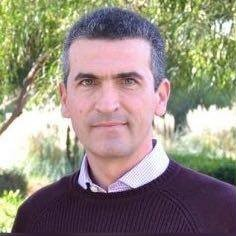Soil Sensing and Mapping in Precision Agriculture
A special issue of Sensors (ISSN 1424-8220). This special issue belongs to the section "Smart Agriculture".
Deadline for manuscript submissions: closed (31 March 2025) | Viewed by 25218
Special Issue Editors
Interests: precision agriculture; probabilistic models; sensing; GIS
Special Issues, Collections and Topics in MDPI journals
Interests: agricultural mechanization; precision agriculture; sensors; agro-silvo-pastoral systems
Special Issues, Collections and Topics in MDPI journals
Interests: sensing; GIS; multispectral imagery; unmanned aerial vehicles (UAVs)
Special Issues, Collections and Topics in MDPI journals
Special Issue Information
Dear Colleagues,
This Special Issue welcomes the contribution of studies focusing on the use of proximal or remote soil sensing techniques with the aim of obtaining information related to any soil property and/or digital mapping allowing, for example, the definition of homogeneous zones and promoting the use of the precision agriculture approach. Manuscripts may consider applications in agricultural or in pasture and grassland fields. The following are examples of suitable topics: methods for the collection of soil and soil-related data, data modelling, interpretation and elaboration of focused soil and/or plant information, application of soil and/or plant information in sectors (agriculture, forestry, natural resource management, climate change mitigation, etc.) and soil and/or plant information systems at different spatial levels, as a basis for the implementation of field differentiated management, for example, through of variable-rate technology (soil amendment, soil fertilization, etc.).
Particular interest will be given to research using and/or developing novel data integration techniques, studies using novel proximal or remotely sensed data, and research outcomes to local stakeholders, including GIS-based planning and decision support tools.
Prof. Dr. Francisco Jesús Moral García
Prof. Dr. João Manuel Pereira Ramalho Serrano
Prof. Dr. Fernando Carvajal-Ramírez
Guest Editors
Manuscript Submission Information
Manuscripts should be submitted online at www.mdpi.com by registering and logging in to this website. Once you are registered, click here to go to the submission form. Manuscripts can be submitted until the deadline. All submissions that pass pre-check are peer-reviewed. Accepted papers will be published continuously in the journal (as soon as accepted) and will be listed together on the special issue website. Research articles, review articles as well as short communications are invited. For planned papers, a title and short abstract (about 250 words) can be sent to the Editorial Office for assessment.
Submitted manuscripts should not have been published previously, nor be under consideration for publication elsewhere (except conference proceedings papers). All manuscripts are thoroughly refereed through a single-blind peer-review process. A guide for authors and other relevant information for submission of manuscripts is available on the Instructions for Authors page. Sensors is an international peer-reviewed open access semimonthly journal published by MDPI.
Please visit the Instructions for Authors page before submitting a manuscript. The Article Processing Charge (APC) for publication in this open access journal is 2600 CHF (Swiss Francs). Submitted papers should be well formatted and use good English. Authors may use MDPI's English editing service prior to publication or during author revisions.
Keywords
- proximal soil sensing
- remote soil sensing
- digital soil mapping
- precision agriculture
- management zones
Benefits of Publishing in a Special Issue
- Ease of navigation: Grouping papers by topic helps scholars navigate broad scope journals more efficiently.
- Greater discoverability: Special Issues support the reach and impact of scientific research. Articles in Special Issues are more discoverable and cited more frequently.
- Expansion of research network: Special Issues facilitate connections among authors, fostering scientific collaborations.
- External promotion: Articles in Special Issues are often promoted through the journal's social media, increasing their visibility.
- Reprint: MDPI Books provides the opportunity to republish successful Special Issues in book format, both online and in print.
Further information on MDPI's Special Issue policies can be found here.








